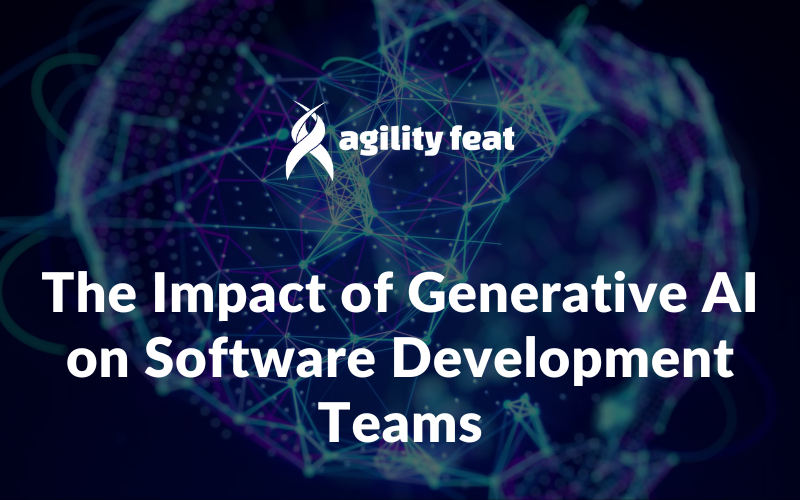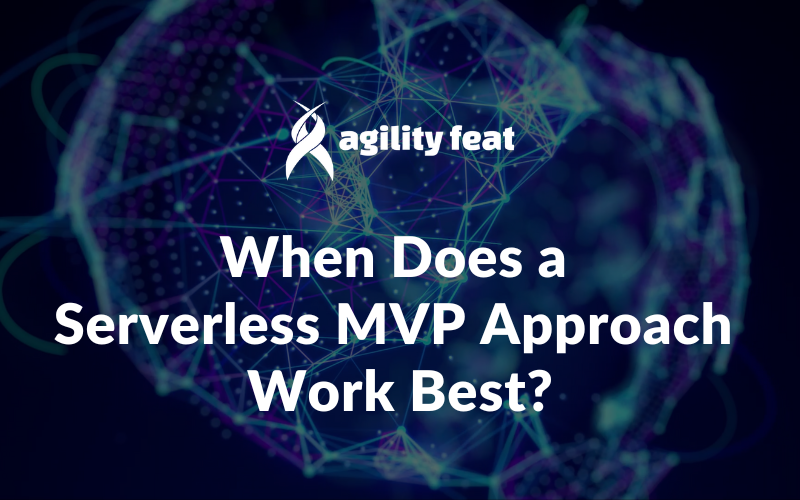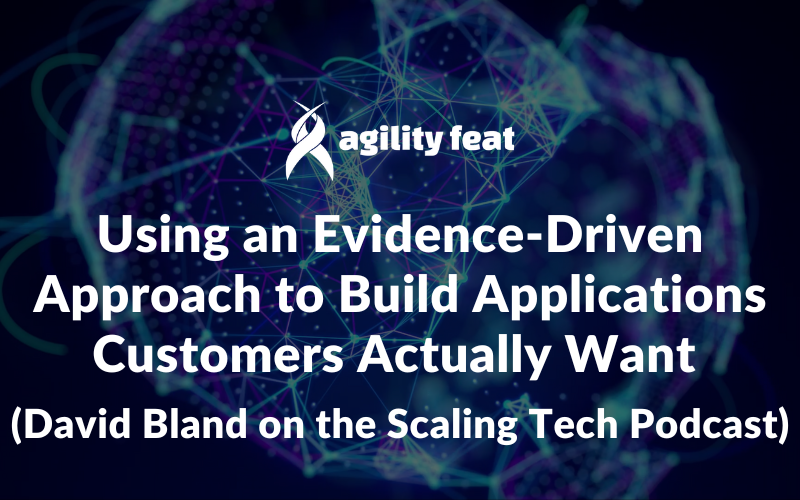Generative AI (GenAI) has taken the world by storm, with undeniable potential to transform industries. In a special episode of the Scaling Tech Podcast, I spoke with Sanjiv Augustine, CEO of Lithespeed and a leading voice in agile methodologies. We explored how GenAI is reshaping software development roles and how these tools enhance—not replace—human collaboration.
In this blog post, we’ll examine how GenAI is reshaping the roles of Scrum Masters, Product Owners, Developers, Testers, and DevOps engineers, as drawn from that conversation. You can watch the full Scaling Tech Podcast episode here and on AgilityFeat YouTube Channel, or continue to read below for my recap.
Scrum Masters: Enhanced Efficiency, Not Replacement
One of the important points we discussed was how GenAI can assist Scrum Masters with routine administrative tasks. From generating meeting notes to tracking sprint metrics, GenAI tools like Atlassian’s Rovo are already demonstrating their ability to streamline workflows. However, as Sanjiv emphasized, these tools should not be seen as a substitute for the Scrum Master’s core responsibilities.
I couldn’t agree more. GenAI may free up time for Scrum Masters, but their ability to inspire, support and guide human teams remains irreplaceable.
Product Owners: Supercharged Backlog Management
GenAI’s potential impact on the Product Owner role is particularly interesting. Like the Scrummaster, it could be used for more text-based purposes, but it can be used to help explain concepts and even to build prototypes.
On the text generation side, GenAI tools could be used to help Product Owners write user stories and generate acceptance test criteria, based on high level epic descriptions provided by the Product Owner. The Product Owner still needs to go through and edit them all in order to capture the true essence of their vision. Just like using GenAI to help write a blog post, you shouldn’t trust GenAI with a prompt like “Write me 100 user stories for my e-commerce app” and expect that you can just paste the results into Jira and go on vacation. Even though the Product Owner still needs to review and make significant edits to all those user stories and acceptance criteria, using GenAI as a starting point can still help uncover ideas the Product Owner may not have thought of, and eliminate “writers block” around less glamorous tasks like covering all test cases.
Even more exciting, perhaps, is the ability to generate prototypes quickly. Many Product Owners will already be familiar with tools like Figma for sharing design ideas across a team and brainstorming. The next step is to take a visual design and use GenAI to create clickable prototypes from it, and this capability exists now.
Some might claim that this ability of GenAI means you don’t need UI/UX designers or front end developers anymore, but realistically, that is not going to be the case. GenAI can help a Product Owner to quickly create prototypes of multiple product concepts and put them in front of users for feedback, which is fantastic for high performing agile teams who value that input. Once you have a design concept selected for production, however, you’ll still need the expertise and savvy of your graphic designers and front end developers to make that concept come to life in a way that makes your brand proud.
We also expect that GenAI tools will eventually be used to help gather feedback from “users in the wild” who are using your website, much like a chat bot can help with customer support. These sorts of use cases will help you to do customer research at scale and then use the GenAI to help summarize results across thousands or millions of users instead of small user research groups.
“Once we have that business model sussed out, and once we have some sort of product backlog, how can we rapidly iterate on that product backlog? And the iteration is not on the delivery side, but it’s on the discovery side, making sure that we are validating customer needs, every epic, every feature, every user story, and maps back to what the customer needs, and we’re checking back with them even as their needs change.“ – Sanjiv Augustine
By leveraging GenAI to write user stories, analyze customer feedback, and visualize design concepts quickly, Product Owners can make more informed decisions and prioritize work more effectively. GenAI acts as a powerful assistant, enabling Product Owners to focus on delivering greater value to customers.
Developers: Coding Smarter, Not Harder
When people think of GenAI, coding tools like GitHub Copilot often come to mind. And for good reason: these tools are revolutionizing the way developers write code. By generating boilerplate code, automating repetitive tasks, and even suggesting solutions to complex problems, GenAI accelerates development cycles while improving code quality.
As we discussed, developers must remain vigilant. These tools are only as good as the human oversight they receive and the prompts you give them. Developers still need to understand the underlying logic, ensure ethical AI use, and validate that the outputs align with project goals. It also falls to the developer to integrate the code into the larger application with property security and good coding practices. And crucially, developers must be careful about pasting proprietary code into public GenAI applications. It’s usually better to work in the opposite direction, where you query a GenAI tool for help with a technical challenge you are facing and then integrate its advice back into your application.
There’s a classic saying about computing: “garbage in means garbage out.” GenAI coding tools still require experienced and knowledgeable developers working with them to build high quality and scalable software.
Testers: A New Era of Automated Testing
Testers stand to gain significantly from GenAI as well. Automated testing frameworks augmented by AI can now generate test cases, predict failure points, and even simulate edge cases that might be missed by manual efforts. This allows QA engineers to focus more on exploratory testing and identifying high-risk areas.
GenAI can be used to help generate test data, and to think about problems from a different angle than the human tester might have thought about by themselves.
Sanjiv and I talked about the importance of minimizing some of the repetitive mundane tasks using a GenAI tool, and using that to amplify the connections between people on the team. By freeing testers from routine work, GenAI enables them to contribute to higher-level testing strategies, and contribute more to vision and implementation of the product.
DevOps: Streamlining Operations
Finally, we touched on the impact of GenAI on DevOps workflows. From infrastructure as code to monitoring and alerting systems, AI-powered tools are helping teams deploy faster, manage resources more efficiently, and detect potential issues before they become critical. But as with other roles, the key is augmentation, not replacement.
The Human Element in GenAI
Throughout the interview, a recurring theme emerged: GenAI is an augmentation tool, not a replacement. Sanjiv captured this perfectly when he said:
The ethical use of AI is making sure that it’s subjugated in the set of technologies, subjugated to the human in the system. And we always make sure that the humans have primacy of agency over AI.” – Sanjiv Augustine
As technology leaders, it’s our responsibility to integrate GenAI responsibly. Governance and oversight will be crucial to ensure that humans maintain primacy and agency over the applications being built. The goal should always be to amplify human collaboration and creativity, not to diminish it.
Looking Ahead: GenAI and the Agile Value Stream
GenAI’s potential to improve productivity and efficiency extends beyond individual roles. It has the power to enhance the entire agile value stream, from ideation to delivery. However, this requires careful planning, a willingness to adapt, and a commitment to ethical practices.
As I reflected on the conversation with Sanjiv, one thing became clear: GenAI is here to stay, and it’s up to us to harness its potential thoughtfully. Whether you’re a Scrum Master, Product Owner, Developer, Tester, or DevOps engineer, GenAI offers opportunities to elevate your role and deliver better outcomes for your team and your customers.
The key question is the same: “Are you building the right thing—something customers value and will pay for?”
Earlier in my career, when I was an agile coach and trainer, I used to remind my clients that agile methods don’t automatically solve your problems, and they don’t guarantee that you are building something your customers want. If you don’t incorporate customer feedback into your work, then agile methods (just like GenAI), will just help you to very efficiently build the wrong thing. But building the wrong thing is still a waste of time, and GenAI by itself won’t stop you from doing that. That’s why the humans in your team are still so important to your success.
Whatever you do, make sure you’re at least experimenting with AI, because as Sanjiv said in the episode and in the clip below, “We have to make sure that we’re inside the AI tent looking out and not outside the AI tent and looking in so that we can actually drive the evolution of these technologies … If I’m going to make a prediction, it’s that we will have AI Agents integrated into our overall workflow, and we need to start thinking about that yesterday, if not sooner.”
Ready to Build Efficient Teams with GenAI?
At AgilityFeat, we specialize in helping companies build high-performing software development teams in Latin America. Whether you’re exploring LLM-based applications, scaling a legacy application, or just looking to expand your team’s capabilities, we’re here to help.










